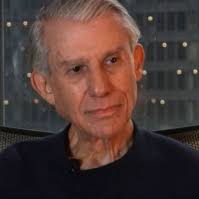This piece was reprinted by OpEd News with permission or license. It may not be reproduced in any form without permission or license from the source.
BP's chief scientist, Steven Koonin, gave him a $500 million grant. In return, Chu appointed him DOE undersecretary for science. But instead of them both getting involved in the Gulf disaster, they stood aside, telling reporters earlier that "things are looking up" when, in fact, they're worsening.
It's unclear "to what extent Chu has given BP favorable treatment, either in terms of crafting DOE's research agenda or its response to the oil spill. But what is clear is that the close ties are casting a shadow over the agency, sowing doubt among the public that the government is truly an independent watchdog."
Also clear is that $500 million buys a lot of influence, expecting payback in far greater amounts and nearly always getting it and then some. When Chu arranged it, UC Berkeley Professor Ignacio Chapela called it "the coup de grace to the very idea of a university that can represent the best interest of the public," benefitting a man who looks deeply compromised - the same "qualification" as other Obama officials for their close industry ties, serving their interests, not the public's.
BP's Specialty: Spill Baby, Spill - Its Other One in Alaska
On May 28, investigative journalist Greg Palast headlined his Buzzflash.com article, "BP's Other Spill this Week," saying:
During the week of May 25, BP's "Pump Station 9, at Delta Junction on the 800-mile (Alaska) pipeline, busted" - spewing over 100,000 gallons because "procedures weren't properly implemented," according to state inspectors. In 2006, irresponsible maintenance caused another one, polluting Prudhoe Bay.
BP "owns the controlling stake in the trans-Alaska pipeline," but tries to hide it, given its poor management practices. The pipeline is understaffed, corroded, and "basic maintenance" is poor - standard procedures for BP, notorious for having the worst safety and environmental record in the industry.
In his earlier investigatory work, Palast learned that BP was most to blame for the 1989 Exxon Valdez disaster. As the controlling Alyeska pipeline owner, it was responsible for the spill response, but handled it the same way as now - by "l(ying, prevaricat(ing) and obfuscatin(ing)," making a serious spill disastrous.
Next Page 1 | 2 | 3 | 4 | 5 | 6 | 7
(Note: You can view every article as one long page if you sign up as an Advocate Member, or higher).





